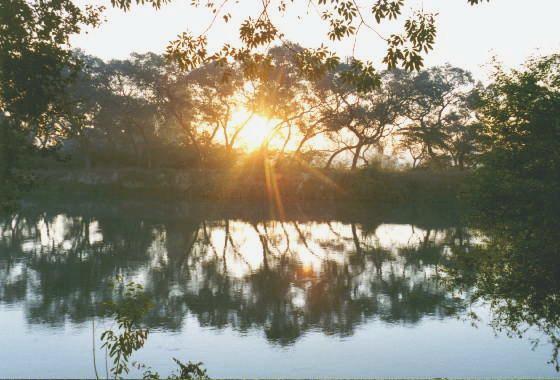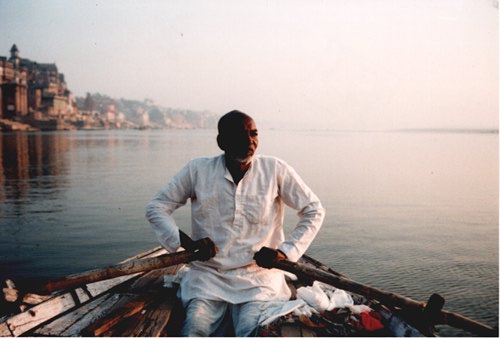
Ganga Ma

The Beneficent Ganga at Rishikesh
Indian civilization has for millenniums made the Ganga its center of activity. The river, emerging from an altitude of 14,000 feet high between the Himalayan and Vindhya mountain ranges, spills out onto the Gangetic plain, making its way southeast for 2510 km. until finally emptying through many channels into the Bay of Bengal. Ganga nourishes the land of northern India, enriching the soil, providing groundwater and irrigation for all.
It is Ganga that is mother, Ganga that mercifully provides for the people each year with her swelling monsoon levels as she sweeps through the principal cities of northern India, such as Allabad, where it joins the Yamuna River, Banaras and Patna. As the river winds through the pastoral countryside of Uttar Pradesh Indians receive her with great blessings and appreciation; village farmers benefit greatly from the fertile silt and soil that the great Ganga leaves behind. Seasonal flooding leaves small pools and lakes (jhils) that are diverted to irrigate crops in an otherwise dry land (Varady 1982: 232). It is Ganga that speaks life, renewal, and fertility to the people of the Gangetic basin, one of the most fertile and densely populated areas in the world.

Boatman on the Ganges river at dawn in Banaras
Ganga has captured the imagination of and demanded reverence from poets, sadhus, pilgrims, merchants, and traders for centuries. Many of the towns and cities that lie on the banks of the river are thought to be among the oldest inhabited settlements in the world (Stille 1998: 60). Gandhiji once proclaimed the Ganges river "a symbol of India’s age-long culture and civilization, ever-changing, ever-flowing, and yet ever the same Ganga." (Sivaramamurti 1976: foreword)
| Ganga Ma | Ganga Mythology | Ganga Today | Cleanup efforts and the Dilemma | Bibliography |